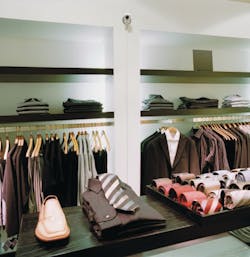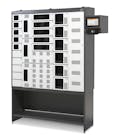Study: Retailers migrating to IP video at a staggering rate
According to the results of a new study conducted by the Loss Prevention Research Council (LPRC) released this week at the National Retail Federation’s (NRF) BIG Show in New York City, retailers are migrating to IP video solutions at a rapid pace.
The "CCTV in Retail 2012" report, which was commissioned by Axis Communications and examined responses from 47 national and regional retailers, found that nearly 64 percent of stores have some form of IP-connected surveillance system. That is more than double the amount of stores that said they were using network video solutions in a similar study conducted in 2010.
Among some of the studies other findings included:
- Of stores that still use analog-based surveillance systems, 43 percent of respondents said that they had an IP migration strategy in place and another 21.4 percent said they would like to create a plan in the future.
- Only 38.5 percent of respondents with IP systems said they have access to live video via a mobile device, however, 87.5 percent said they would find this capability useful.
- Of those that use IP surveillance systems for more than just loss prevention, 93 percent reported that they have seen a positive impact on operations and 40 percent said they saw a positive impact on merchandising.
- The most non-loss prevention analytic applications used by respondents was people counting (46.3 percent), followed by dwell time analysis (20 percent) and heat mapping (18.2 percent). Slightly more than 38 percent of respondents said they used video analytics to detect point-of-sale fraud.
According to Dr. Read Hayes, director of the LPRC and a researcher at the University of Florida, there is a combination of factors that have contributed to this dramatic increase in IP adoption in the retail sector.
"IP video now is obviously well-accepted. The technology is much more reliable, but the affordability is a big key," he said. "It comes at the same time really as so much of the analog or earlier generation technologies are almost becoming non-functional."
In addition, Hayes believes that the normal turnover among loss prevention and asset protection decision makers has also had somewhat of an impact.
"Some are more technology savvy and that’s part of the equation. Others did not purchase the legacy equipment that was in place, so they don’t have loyalty to that either," he explained. "There has also been turnover in the technology companies themselves over time, so some of those relationships are gone and new relationships are forming."
While there has been a lot of talk in the retail industry over the past 10 to 15 years about how video can be used for more than just loss prevention, Hayes said that some stores are finally beginning to realize the ROI potential of these analytic features.
"I can tell you as a researcher… we’re having more projects come to us that aren’t a part of loss prevention at all," Hayes said. "Or the loss prevention decision maker who comes to us or technology company is saying look 'ultimately this is for loss prevention, but initially the value and the purchasing is going to come from operations or merchandising.'"
While the majority of survey respondents (60 percent) said they didn’t have anyone to monitor or analyze video in real-time, Hayes said video surveillance – be it network or analog – still has a deterrent effect and can be used forensically after an incident. The prevalence of organized retail crime (ORC) has also provided a "wake-up call" to many loss prevention managers about the importance of having high-quality, easily retrievable video evidence that IP camera systems provide. "The ability to rapidly share video data with others in the corporate office building or in the field is just a huge benefit," he said.
With the enhanced capabilities and improved image resolution that come with having network cameras, Hayes believes that this IP migration by retailers will continue.
"You can see the flexibility and the migration opportunities with digital and IP protocol technology and I think they want to take advantage of that," said Hayes. "They want to harness video with customer service, safety and loss prevention and asset protection initiatives with other technologies to work to track different high-risk products."




